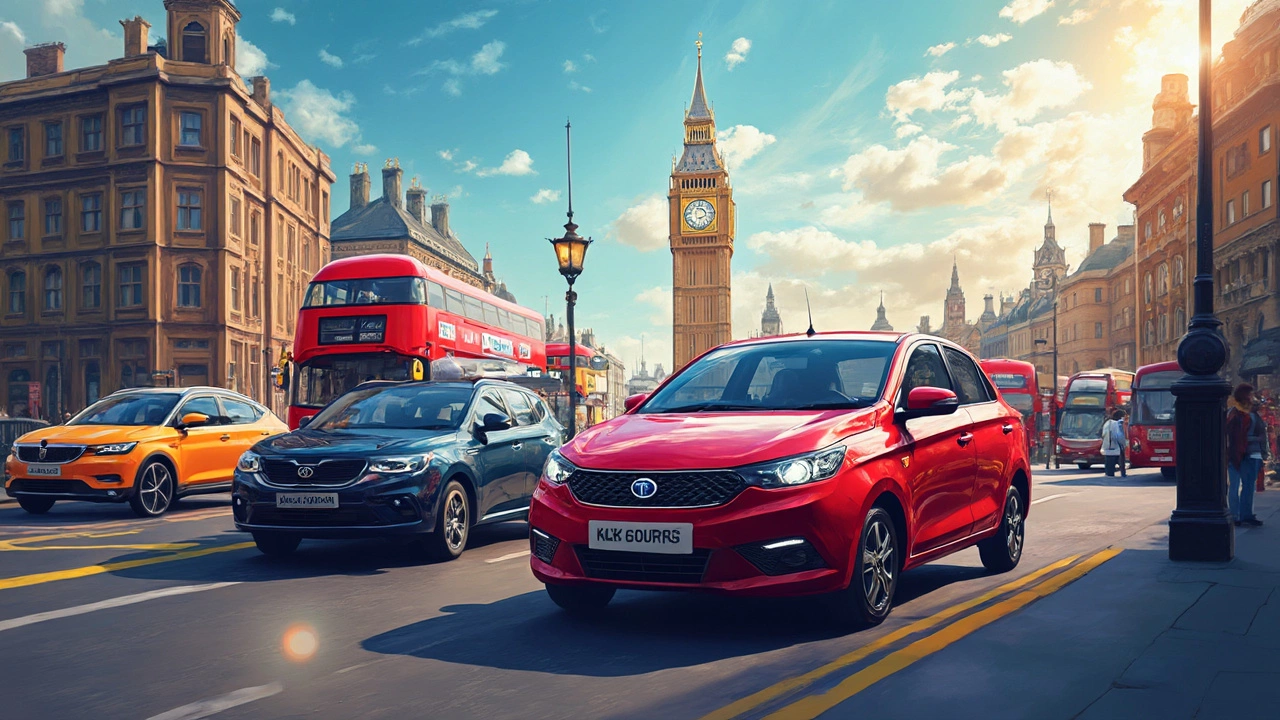- Who is the World's Largest Chemical Manufacturer? - 2025 Update Oct 21, 2025
- Easiest Manufacturing Businesses to Start: Real-Life Ideas That Work May 20, 2025
- Top Manufacturing Startup Ideas Thriving in 2024 Dec 31, 2024
- What Plastic Pollutes the Ocean the Most? Apr 13, 2025
- Top Car Brands Manufactured in India: The Complete 2025 Guide Aug 4, 2025
Automobile Export in India: What You Need to Know
If you’re thinking about sending Indian‑made cars overseas, you’ve come to the right place. The automobile export scene in India is growing fast, with manufacturers eyeing markets in Africa, the Middle East, and South America. This guide breaks down the biggest trends, the top models that travel abroad, and the steps you need to take to get a vehicle from a factory floor to a foreign showroom.
Why India Is Becoming a Car Export Hub
First, let’s talk about why Indian factories are ramping up exports. Lower labor costs, a strong supply chain for parts, and government incentives like the Production Linked Incentive (PLI) scheme make it cheaper to produce cars here. At the same time, Indian brands have built a reputation for sturdy, fuel‑efficient vehicles that suit a range of road conditions. That mix of cost advantage and reliable design is drawing buyers from countries that need affordable yet tough cars.
Data from 2023 shows that exports of passenger vehicles rose by roughly 12% year‑on‑year. The biggest buyers are Bangladesh, Sri Lanka, and a few African nations. These markets value the low price point and the ease of maintenance that Indian cars offer.
Top Exported Models in 2025
Not every car makes it onto the export list. The winners are usually compact SUVs and budget sedans that can handle different climates. Here are the three models that dominate the export charts:
- Suzuki Swift – Small, fuel‑efficient, and cheap to ship. It’s popular in Southeast Asian ports.
- Mahindra XUV300 – A compact SUV that balances price with off‑road capability, a hit in African markets.
- Hyundai Creta – Mid‑size SUV with a strong after‑sales network, often exported to Middle Eastern countries.
These models share common traits: low weight, decent mileage, and a price tag under $15,000 FOB (free on board). That keeps shipping costs in check and makes them attractive to importers.
Step‑by‑Step Guide to Export a Car
Now, let’s get practical. Moving a car from an Indian plant to a foreign buyer involves a few clear steps:
- Identify the buyer and market requirements – Different countries have different emission standards and safety certifications. Get those details early.
- Prepare export documentation – You’ll need a Commercial Invoice, Packing List, Bill of Lading, and a Certificate of Origin. Most forwarders can help you pull these together.
- Choose the right shipping method – For most cars, Roll‑On/Roll‑Off (RORO) vessels are cheaper than container shipping. If you’re moving high‑value models, a container adds security.
- Handle customs duties and taxes – Check the import duties of the destination country. Some markets offer duty‑free concessions for certain vehicle categories.
- Arrange insurance – Marine insurance protects against loss or damage during transit. It’s a small cost compared to a potential disaster.
Following these steps keeps delays to a minimum and ensures the buyer receives the car in good condition.
Common Challenges and How to Overcome Them
Even with a smooth process, exporters run into hiccups. One frequent issue is paperwork mismatch – a small error in the Bill of Lading can hold a shipment up for days. To avoid that, double‑check every field against the commercial invoice.
Another problem is differing safety norms. For example, some African nations require specific lighting systems. Working with a local agent who understands those rules can save you time and extra retro‑fit costs.
Finally, currency fluctuations can affect profitability. Locking in exchange rates through forward contracts or invoices in a stable currency like USD can protect margins.
Exporting Indian cars is a solid business if you know the market, pick the right models, and handle logistics carefully. With the trends pointing upward, now is a good moment to explore automobile export opportunities.
Are Tata Cars Sold Internationally? Exploring Global Reach
- Aarav Sekhar
- Mar 2, 2025
Tata Motors, a leading automobile manufacturer in India, has extended its footprint beyond domestic borders. Known for robust engineering and affordable pricing, Tata cars are sold in various international markets. The company has steadily expanded its presence in countries like the UK, South Africa, and parts of Latin America. Through strategic partnerships and a keen focus on customer needs, Tata Motors aims to strengthen its global market share. This article delves into the international journey of Tata cars, highlighting key markets and strategies.
